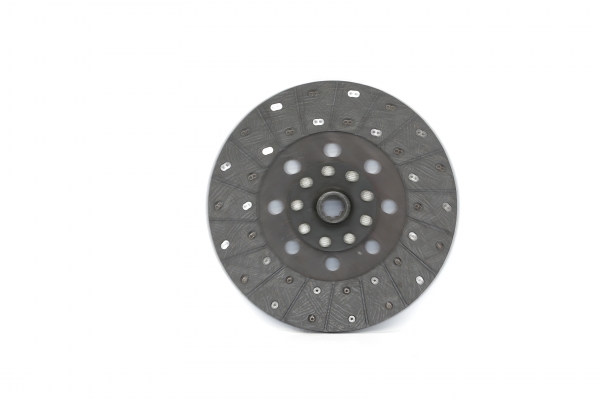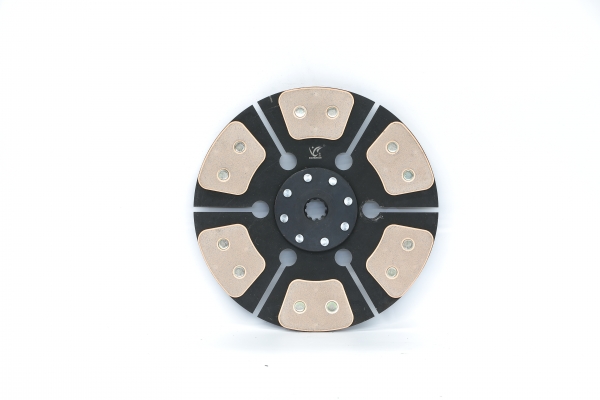A friction disc, also known as a clutch disc, is a component in a clutch system that transmits torque between two rotating shafts. It is a flat, circular plate that is placed between the clutch pressure plate and the flywheel. When the clutch is engaged, the friction disc is compressed between the pressure plate and flywheel, creating friction that transfers torque from the engine to the transmission.
Friction discs are typically made of materials such as fiber, metal, or a composite of materials, and can be designed for different types of clutch systems, including manual and automatic transmissions. The material and design of the friction disc determine its grip, durability, and performance.

Some key features of friction discs include:
- Friction Material: The type of friction material used on the disc affects the clutch’s grip and durability.
- Disc Diameter: The diameter of the friction disc must match the size of the clutch and the flywheel for proper fit and performance.
- Splines: Friction discs may have splines that engage with corresponding splines on the transmission’s input shaft to transfer torque.
- Sprung vs. Unsprung: Friction discs can be either sprung or unsprung, with sprung discs having a central spring that absorbs vibration and reduces noise, while unsprung discs have no central spring and are typically used in high-performance applications.
- Number of Friction Surfaces: Some friction discs have multiple friction surfaces that can provide better grip and performance compared to single-surface discs.

When replacing a friction disc, it is important to use a replacement that is compatible with the clutch system and meets the specifications of the original equipment manufacturer. A professional mechanic or clutch specialist can assist with the selection and installation of the correct friction disc.
More detailed information about friction discs can be accessed by clicking:https://www.syclutch.com/tractor-clutch/friction-disc



